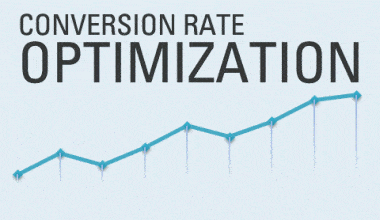Looking for a way to grow your revenue as a sales expert, then we have got you covered. Sales prospecting is a crucial process in the field of sales. It involves the identification and cultivation of potential customers or leads who have the potential to become paying customers. The techniques used in sales prospecting are diverse and adaptable to various industries and target markets which has been explained here. Let us see what sales prospecting is and how you can apply these techniques, templates, and software solutions daily, for you to start making sales.
What is Sales Prospecting?
Sales prospecting is a proactive approach to identifying and engaging customers. Sales professionals can initiate meaningful connections with prospects by employing various techniques such as cold calling. They can also use email prospecting, social selling, and referral prospecting. Templates and software solutions have made the process become more efficient and organized, leading to increased sales opportunities and growth.
Sales prospecting templates are commonly used to streamline the outreach process and ensure consistent messaging. These templates serve as a starting point for crafting personalized messages, allowing sales professionals to save time and maintain a structured approach while tailoring the content to each prospect. The goal of sales prospecting is to generate new revenue by identifying and converting potential customers into paying clients. It is an essential component of any sales strategy and requires a systematic, strategic approach to be effective.
Techniques in Sales Prospecting
The techniques used in sales prospecting can vary depending on the industry, target market, and available resources. Common techniques include:
#1. Cold Calling
This involves reaching out to potential customers via phone without prior contact. It requires effective communication skills, a compelling pitch, and the ability to handle objections.
#2. Email Prospecting
Sending personalized and targeted emails to potential customers is a widely used technique. Effective email prospecting involves crafting attention-grabbing subject lines, understanding the recipient’s pain points, and tailoring the message accordingly.
#3. Social Selling
Sales professionals use social media to share valuable content, build relationships, and establish credibility in their industry
#4. Referral Prospecting
Seeking referrals from existing customers, partners, or contacts who can recommend potential leads.
Sales Prospecting Tools
Sales prospecting tools are software solutions designed to aid sales professionals in their efforts to identify, engage and convert potential customers into qualified leads. These tools provide functionalities that streamline the prospecting process and enhance productivity.
Some common sales prospecting tools include:
#1. Customer Relationship Management (CRM) Software
CRM software enables sales teams to effectively manage and nurture leads throughout the prospecting and sales process. They provide a centralized database to store and organize contact information, track interactions, and manage sales pipelines.
#2. Lead Generation Tools
These tools help sales professionals find new potential leads by providing access to vast databases and sources of contact information.
#3. Email Outreach and Automation Software
They offer features like email templates, mail merge functionality, and automated follow-ups.
#4. Sales Intelligence Tools
They gather data from various sources, including social media, news articles, and company websites, to provide comprehensive profiles of prospects.
35. Social Media Listening and Engagement Tools
They provide features such as social media listening, content scheduling, and engagement tracking. These tools help sales teams identify potential leads, build relationships, and leverage social selling strategies.
#6. Sales Analytics and Reporting Tools
These tools track key metrics like email open rates, response rates, and conversion rates.
#7. Sales Dialer Software
They provide features like click-to-dial, call recording, and call analytics.
Sales Prospecting Techniques
Sales prospecting techniques are methods used to identify and engage with potential customers or leads to convert them into paying clients. Effective sales prospecting techniques require a clear understanding of the target market and audience along with careful planning and execution.
Effective Sales Prospecting Technique
#1. Inbound Prospecting
Inbound prospecting involves creating content that attracts potential customers to the business. They use blogs, SEO, social media, and other digital marketing techniques.
#2. Social Media Outreach
Social media platforms such as LinkedIn, Facebook, and Twitter can be effective tools for sales prospecting. By creating connections with potential customers and engaging with them, businesses can build relationships that ultimately lead to sales.
#3. Referrals
Existing customers can be a valuable source of new business through referrals. Encouraging customers to refer their friends and colleagues can be a highly effective sales prospecting technique.
#4. Networking
Networking with potential customers can help businesses to connect with new leads and establish relationships that lead to sales.
#5. Outbound Marketing and Outreach
Outbound marketing techniques such as cold calling and email campaigns can be effective when executed properly. By identifying potential customers and reaching out to them in a personalized way, businesses can generate new leads and drive sales.
#6. Content Marketing
Creating and sharing valuable content such as e-books, whitepapers, and webinars can be a powerful way to engage potential customers and establish the business as an authority.
#7. Account-Based Marketing (ABM)
ABM is a targeted marketing strategy that involves identifying and focusing on high-value accounts. By targeting specific accounts with personalized messaging and outreach, businesses can generate higher-quality leads and accelerate the sales process.
#8. Video Marketing
Video content is becoming increasingly popular, particularly for B2B sales. Creating engaging and informative videos can help businesses to reach potential customers and drive sales.
#9. LinkedIn Sales Navigator
LinkedIn Sales Navigator is a tool that enables sales professionals to identify and target potential customers on LinkedIn. By using advanced search filters and other features, sales teams can identify high-quality leads and engage with them in a personalized way.
#10. Customer Referral Programs
Creating a customer referral program can incentivize existing customers to refer new businesses. By rewarding customers for successful referrals, businesses can generate more high-quality leads and drive sales.
Sales Prospecting Software
Sales prospecting software refers to specialized software solutions that assist sales professionals in identifying, nurturing, and converting potential leads into customers. These software tools provide a range of features and functionalities to streamline the prospecting process, improve efficiency, and drive sales success.
Some sales prospecting software solutions include:
#1. Customer Relationship Management (CRM) Software
CRM platforms serve as a central hub for managing prospect and customer data. They allow sales teams to store and organize contact information, track interactions, manage sales pipelines, and automate various prospecting tasks.
#2. Lead Generation Software
These tools enable sales teams to identify and generate new leads by leveraging various data sources. These tools help sales professionals expand their reach and find potential prospects that align with their target audience.
#3. Sales Engagement Platforms
Sales engagement software focuses on automating and optimizing prospecting activities. These platforms offer features like email templates, email tracking, automated follow-ups, and analytics.
#4. Social Selling Tools
Social selling software assists sales professionals in leveraging social media platforms for prospecting and relationship-building. These tools provide features like social listening, content scheduling, lead generation, and analytics.
#5. Sales Analytics and Reporting Software
Analytics tools help sales professionals track and analyze key metrics related to their prospecting efforts. These tools provide insights into email open rates, response rates, conversion rates, and other important performance indicators.
#6. Sales Dialer Software
Sales dialer software automates the outbound calling process, making it more efficient and productive. These tools offer features such as click-to-dial, call recording, call analytics, and call scripting.
Sales Prospecting Sales Email Examples
Sure, here are a few examples of sales prospecting email templates:
Template 1:
Subject: Congrats!
Hi [First Name],
I noticed that [Company or Prospect] just [action taken – launched, raised funds, expanded, etc]. I couldn’t help but reach out and say congratulations! Similar companies like [Related Company Name] have seen [Outcome] after working with us.
Would love to learn more about [Company or Prospect] and potentially share a few ideas that could help optimize [Potential Benefit]. Are you available for a quick chat later this week?
Best Regards,
[Your Name]
[The Title/Position]
[Name of the Company]
[Contact Information]
Sales Prospecting Process
The sales prospecting process involves a series of steps aimed at identifying, qualifying, and engaging potential leads. Here are a few sales prospecting processes:
#1. Identify Your Target Audience
Determine your ideal customer profile based on factors such as industry, company size, job title, geographic location, or specific needs.
#2. Research and Gather Prospect Data:
Utilize various sources such as online directories, social media, industry reports, and lead-generation tools to collect contact information. It can be used to gather insights about potential prospects.
#3. Craft a Compelling Value Proposition
Develop a clear and concise message that highlights the unique value your product or service offers.
#4. Choose Prospecting Channels
Select the most effective channels to reach your target audience. This can include phone calls, emails, social media platforms, events, or referrals.
#5. Initiate Contact
Reach out to your prospects using the chosen channels. Make an initial introduction and express your interest in exploring a potential business relationship.
#6. Personalize Your Outreach
Tailor your messaging to each prospect to demonstrate that you understand their unique challenges and needs.
#7. Qualify and Prioritize
Assess the level of interest and fit of each prospect by asking qualifying questions.
#8. Schedule Sales Meetings or Demos
Once a prospect shows genuine interest and qualifies as a potential opportunity, schedule a sales meeting.
#9. Convert to Sales
Utilize effective sales techniques and negotiation strategies to convert qualified prospects into paying customers.
#10. Continuously Evaluate and Improve
Regularly review your prospecting efforts, measure key metrics, and identify areas for improvement.
#11. Follow-Up and Nurture
After the initial contact, follow up with prospects to continue the conversation.
B2B Sales Prospecting
B2B sales prospecting refers to the process of identifying, qualifying, and engaging potential business customers in a business-to-business (B2B) context. It is the process of identifying and targeting potential customers or clients for a business. In B2B sales, the prospective customers are other businesses. The process involves researching and analyzing these businesses. It is to determine whether they would be a good fit for the product or service being offered.
The goal of B2B sales prospecting is to create new sales opportunities by reaching out to and connecting with potential customers. This typically involves using a variety of techniques, such as email campaigns, direct mail, social media outreach, and cold calling. The process of B2B sales prospecting starts with identifying target accounts. It follows by creating an ideal customer profile (ICP) and then researching businesses that fit that profile. Once potential customers are identified, a sales representative may attempt to contact them. The representative determines if the business is fit or not.
What is an Example of Sales Prospecting?
An example of sales prospecting is researching and identifying potential leads or clients who may be interested in a product or service. This can involve searching databases and engaging with prospects on social media. It involves researching and generating leads, qualifying their interest, following up, converting leads into sales, and building relationships with prospects. It also includes you attending industry events or conferences and reaching out through cold calls or emails to initiate contact and begin the sales process.
The goal is to expand the customer base and drive business growth.
How Do I Start Prospecting Sales?
To start prospecting sales, follow these steps:
- Define your target audience.
- Conduct market research.
- Build a prospecting list.
- Craft a compelling value proposition.
- Choose prospecting channels.
- Develop a prospecting strategy.
- Personalize your outreach.
- Follow up and nurture relationships.
- Track and analyze results.
What are the 5 P’s of Prospecting?
The 5Ps of prospecting are a framework used to guide effective sales prospecting efforts. They stand for:
- Purpose: Clearly define the purpose or objective of your prospecting efforts
- Preparation: Preparation involves researching and analyzing potential customers to identify their needs and preferences.
- Plan: Develop a prospecting plan that outlines your strategies, tactics, and timelines.
- Persistence: Sales prospecting requires persistence and perseverance.
- Practice: Practice involves continuously refining and improving the prospecting strategy over time.
What are the 3 Stages of Prospecting?
The three stages of prospecting can be summarized as follows:
- Pre-Prospecting: This stage involves activities that prepare you for effective prospecting.
- Prospecting: It includes activities such as initiating contact, qualifying prospects, and nurturing relationships.
- Follow-up and Conversion: Once you have established initial contact with prospects, this stage focuses on building relationships and converting qualified leads into customers.
Why is Sales Prospecting Difficult?
Sales prospecting can be difficult for several reasons. First, there is often a significant amount of competition in the marketplace, making it challenging to stand out and capture the attention of potential clients. Secondly identifying the right prospects who are interested in your product or service requires research and analysis. It can be time-consuming and resource-intensive. It can also be difficult to navigate through gatekeepers and reach decision-makers directly. Finally, rejection is an inherent part of the sales prospecting process, and dealing with rejection regularly can be emotionally challenging for sales professionals.
Can You Make a Living Off Prospecting?
Yes, it is possible to make a living off prospecting. Sales professionals who are skilled in prospecting and have a strategic approach to finding and closing deals can be highly successful. It requires consistent effort, resilience, and adaptability to overcome challenges and meet sales targets. Consistently identifying and converting quality leads can lead to a lucrative career in sales.
Conclusion
Cold calling, where sales representatives contact potential customers by phone without prior contact, remains a popular approach. Email prospecting involves reaching out to prospects through well-crafted emails tailored to their needs and interests. Social media platforms, such as LinkedIn and Twitter, offer opportunities for social selling. Referral prospecting involves leveraging existing customer relationships to obtain referrals to new prospects. These templates serve as frameworks for constructing compelling and personalized messages to engage potential customers. Sales professionals can adapt these templates to suit their target audience, industry, and product or service offerings, saving time and ensuring consistent messaging.
Software solutions play a crucial role in optimizing sales prospecting efforts. Customer Relationship Management (CRM) platforms provide comprehensive tools for managing and tracking leads, enabling sales teams to organize prospect data, monitor interactions, and prioritize prospects based on various criteria. Sales engagement software automates and streamlines the prospecting workflow, enabling sales professionals to send personalized emails, schedule follow-ups, and track prospect engagement. Such software solutions offer analytics and reporting capabilities that provide valuable insights into prospect behavior and sales performance.
Related Articles
- SALES TRAINING SOFTWARE: Top Best Options of 2023
- HOW TO GET INTO TECH SALES: The Ultimate Guide 2023
- BANT IN SALES: What Is It & How to Qualify Sales Leads?
- SALES DIRECTOR SALARY: How Much Can They Make?
- SALES DIRECTOR: What Is It, Duties & How to Become One?






